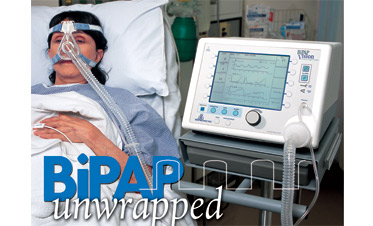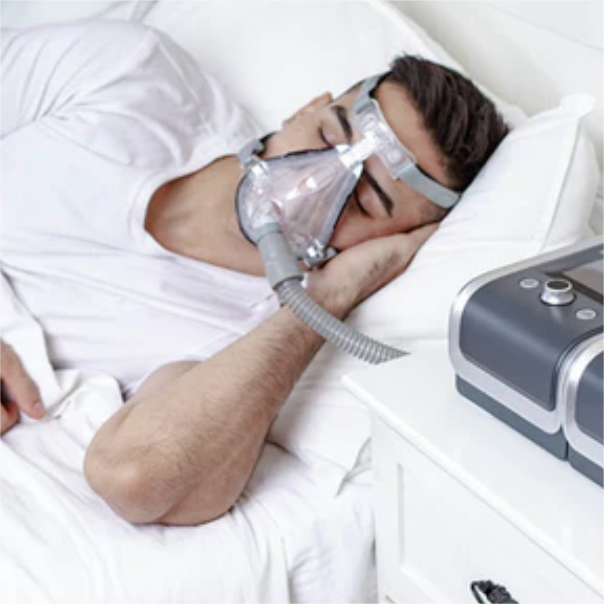Bipap vs. CPAP: Which Is the Ideal for Your Sleep Condition?
When browsing the complexities of rest problems, the choice between BiPAP and CPAP therapy is a critical factor to consider. While CPAP offers a steady air flow appropriate for obstructive rest apnea, BiPAP's twin pressure settings might enhance convenience for those with even more detailed respiratory concerns.
Comprehending Rest Disorders
Rest disorders encompass a series of conditions that interrupt normal rest patterns, affecting both the top quality and period of remainder. These conditions can show up in numerous kinds, including insomnia, sleep apnea, narcolepsy, uneasy leg disorder, and parasomnias. Each problem offers unique challenges, commonly bring about substantial daytime tiredness, cognitive disability, and psychological disturbances.
Sleep problems is identified by trouble falling or staying asleep, while rest apnea involves duplicated disruptions in breathing during rest, frequently resulting in fragmented rest. Narcolepsy, on the other hand, is marked by extreme daytime drowsiness and unexpected sleep strikes. Agitated leg syndrome creates uneasy experiences in the legs, triggering an irrepressible desire to relocate them, which can likewise prevent the ability to sleep.
The effect of rest disorders expands past specific health, affecting overall performance, relationships, and top quality of life. Comprehending the specific nature of each disorder is vital for efficient diagnosis and treatment. As rest wellness becomes progressively acknowledged as a vital element of general wellness, attending to these conditions is important for boosting both rest quality and daily performance.
How CPAP Works
Constant Favorable Airway Stress (CPAP) therapy is often used as a primary therapy for obstructive rest apnea (OSA) The device of CPAP includes using a maker that supplies a constant stream of air via a mask used throughout rest. This air flow preserves positive stress in the air passage, avoiding the collapse or obstruction of the throat that can take place during rest.
When an individual inhales, the CPAP device offers a continual flow of air, making certain that the air passage stays open - BiPAP Rental. This not just minimizes the signs and symptoms of OSA, such as snoring and interrupted rest patterns, but additionally decreases the involved wellness dangers, consisting of cardiovascular complications and daytime fatigue
The stress setups on a CPAP equipment can be tailored to fulfill individual client demands, frequently figured out with a sleep research. Generally, CPAP treatment has actually been shown to substantially boost the high quality of sleep and overall health and wellness for individuals experiencing from obstructive rest apnea.
Exactly How BiPAP Functions
BiPAP, or Bilevel Positive Respiratory Tract Stress, is a customized type of non-invasive ventilation that is specifically advantageous for patients with conditions such as intricate sleep apnea or respiratory system disorders. Unlike CPAP, which delivers a continuous stream of air at a single stress, BiPAP offers two unique pressure settings: a greater inspiratory pressure for inhalation and a reduced expiratory stress for exhalation. This dual-pressure approach enables for simpler breathing, reducing the initiative called for during exhalation.
The gadget operates with a mask fitted over the nose or mouth, attached to a machine that creates atmospheric pressure. When the client inhales, the device provides the higher pressure to help with air flow, making certain that the respiratory tract continues to be open. Upon exhalation, the maker immediately reduces the pressure, making it more comfy for the person to breathe out.

Key Distinctions Between BiPAP and CPAP

In comparison, BiPAP (Bilevel Positive Respiratory tract Pressure) provides 2 different pressure settings: one for breathing and a reduced one for exhalation. This double pressure system enables for more comfy breathing, specifically for people that struggle with exhaling versus a continuous stress. BiPAP is often suggested for people with complex rest apnea, chronic obstructive lung illness (COPD), or those who require added support throughout sleep.
Furthermore, the intricacy of BiPAP tools generally causes a greater expense and requires a lot more cautious titration than CPAP. BiPAP Rental. Recognizing these crucial differences can assist in acknowledging which gadget may be preferable for specific rest disorders, establishing the groundwork for informed therapy choices
Picking the Right Therapy
The decision in between BiPAP and CPAP treatment primarily hinges on the specific attributes of the sleep problem, the person's general health and wellness, and their comfort with the device. CPAP, which provides a continuous stream of air, is commonly recommended for obstructive sleep apnea (OSA)
On the other hand, BiPAP offers 2 degrees of stress: one for breathing and a reduced one for exhalation. This twin pressure system is useful for individuals with complex rest apnea or those that experience problem breathing out versus a continuous pressure. Furthermore, BiPAP is often advised for individuals with respiratory problems, such as chronic obstructive pulmonary illness (COPD), where differing pressure settings can boost comfort and compliance.
Eventually, an extensive assessment by a sleep expert, consisting of a rest study, can assist identify which therapy aligns finest with the person's needs. Variables such as convenience, simplicity of usage, and details clinical problems need to also be thought about to enhance therapy outcomes.
Verdict
In summary, both BiPAP and CPAP offer distinct objectives in the monitoring of sleep problems. CPAP is effective for obstructive sleep apnea with constant air movement, while BiPAP provides twin stress settings that boost convenience for those with complex rest apnea or breathing issues. The choice between these treatments need to be guided by private requirements and conditions, requiring a comprehensive evaluation by a rest specialist to guarantee optimal therapy results and boosted top quality of rest.

Overall, CPAP therapy has actually been shown to substantially enhance the quality of rest and general health for individuals experiencing from obstructive sleep apnea.
BiPAP is usually recommended for people with complicated rest apnea, chronic obstructive pulmonary disease (COPD), or those who call for extra support Your Domain Name throughout sleep.
CPAP is efficient for obstructive sleep apnea through consistent air flow, while BiPAP uses double stress settings that improve convenience for those with intricate rest apnea or respiratory issues.